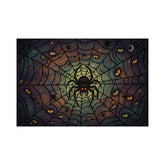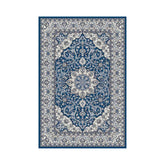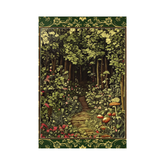What Are The Carpet Models Predicted For 2026?
What are the carpet models predicted for 2026?
The world of interior design is ever-evolving, and carpets play a pivotal role in shaping the ambiance of a space. As we navigate through the latest trends, it becomes evident that carpets are not merely functional items; they are essential elements that contribute to the overall aesthetic and emotional resonance of a room. The current carpet trends reflect a blend of innovation, sustainability, and artistic expression, catering to diverse tastes and lifestyles.
From eco-friendly materials to bold colors and intricate patterns, the choices available today are as varied as the individuals who inhabit these spaces. In recent years, there has been a noticeable shift towards carpets that not only enhance the visual appeal of a room but also align with the values of modern consumers. As awareness of environmental issues grows, so does the demand for sustainable options.
Additionally, the rise of technology has influenced design possibilities, allowing for carpets that integrate smart features. This article will delve into the most prominent carpet trends shaping the industry today, exploring how they reflect broader societal changes and individual preferences. Check out our amazing selection of Custom Rugs for your home decor needs.
Sustainable Materials and Eco-Friendly Designs
Sustainability has become a cornerstone of modern design, and carpets are no exception. The use of eco-friendly materials is on the rise, with manufacturers increasingly opting for natural fibers such as wool, jute, and sisal. These materials not only reduce the carbon footprint associated with carpet production but also offer durability and comfort.
For instance, wool is a renewable resource that is biodegradable and has natural insulating properties, making it an excellent choice for both environmental and practical reasons. Moreover, many brands are now focusing on recycling and upcycling materials to create carpets that are both stylish and sustainable. Recycled PET (rPET), made from plastic bottles, is gaining traction as a viable carpet material.
This innovative approach not only diverts waste from landfills but also provides consumers with a guilt-free option that does not compromise on aesthetics. Eco-friendly designs often feature organic dyes and low-VOC adhesives, ensuring that indoor air quality is maintained while still delivering beautiful products.
Bold and Vibrant Colors
In stark contrast to the muted palettes that dominated previous years, bold and vibrant colors are making a significant comeback in carpet design. Homeowners and designers alike are embracing rich hues such as deep blues, fiery reds, and lush greens to create striking focal points within their spaces. These colors can evoke emotions and set the tone for an entire room, transforming an ordinary area into an extraordinary one.
For example, a bright yellow carpet can infuse a living room with energy and warmth, while a deep navy blue can create a sense of calm and sophistication. The key to successfully incorporating bold colors lies in balance; pairing vibrant carpets with neutral furnishings can allow the carpet to shine without overwhelming the space. Additionally, gradient or ombre effects are becoming popular, where colors transition seamlessly from one shade to another, adding depth and visual interest to the flooring.
Geometric Patterns and Abstract Designs
Geometric patterns have long been a staple in interior design, but their resurgence in carpet trends is particularly noteworthy. These designs can range from simple shapes to complex arrangements that create a sense of movement within a room. The appeal of geometric patterns lies in their versatility; they can complement both contemporary and traditional decor styles, making them suitable for various settings.
Abstract designs are also gaining traction, allowing for artistic expression through flooring. These carpets often feature splashes of color and irregular shapes that mimic modern art pieces. For instance, a carpet with an abstract design can serve as a conversation starter in a minimalist space or add an unexpected twist to a more traditional setting.
The interplay between geometric patterns and abstract designs offers endless possibilities for customization, enabling homeowners to curate unique environments that reflect their personal style.
Textured and Multidimensional Carpets
Texture plays a crucial role in creating depth and interest in interior spaces, and textured carpets are becoming increasingly popular as a result. These carpets can feature various pile heights, loops, and weaves that add tactile richness to a room. For example, a shaggy carpet can evoke coziness and warmth, making it ideal for bedrooms or living areas where comfort is paramount.
Multidimensional carpets take this concept further by incorporating different textures within a single piece. This can create visual intrigue while also enhancing the sensory experience of walking on the carpet. Carpets that combine smooth and rough textures can guide movement through a space or delineate areas within an open floor plan.
The use of texture not only elevates the aesthetic appeal but also contributes to the overall comfort of the environment.
Vintage and Retro-Inspired Styles
Nostalgia plays a powerful role in design trends, and vintage or retro-inspired carpets are making waves in contemporary interiors. These carpets often draw inspiration from past decades, featuring patterns and colors reminiscent of mid-century modern or art deco styles. The charm of vintage designs lies in their ability to evoke memories while still feeling fresh and relevant in today’s context.
For instance, a retro geometric pattern in muted tones can add character to a modern home without clashing with contemporary furnishings. Additionally, vintage-inspired carpets often utilize traditional weaving techniques that enhance their authenticity and craftsmanship. Homeowners seeking to create a timeless look may find that incorporating these styles allows them to blend old-world charm with modern sensibilities seamlessly.
Customizable and Personalized Carpets
As consumers increasingly seek individuality in their home decor, customizable carpets have emerged as a significant trend. Many manufacturers now offer options for clients to select colors, patterns, sizes, and even textures tailored to their specific needs. This level of personalization allows homeowners to create unique pieces that resonate with their personal style while ensuring that their carpets fit perfectly within their spaces.
For example, a homeowner may choose to design a carpet that features their favorite colors or incorporates motifs that hold personal significance. This trend not only enhances the aesthetic appeal but also fosters emotional connections between individuals and their living spaces. Customizable carpets can be particularly beneficial in commercial settings where branding elements can be integrated into the design, creating cohesive environments that reflect company values.
Technology-Integrated Carpets
The integration of technology into everyday products has revolutionized various industries, including flooring. Technology-integrated carpets are becoming increasingly popular as they offer innovative features that enhance functionality without sacrificing style. For instance, some carpets now come equipped with built-in sensors that can monitor foot traffic or detect changes in temperature.
Smart carpets can also incorporate LED lighting or heating elements that respond to user preferences or environmental conditions. Imagine walking into a room where the carpet subtly illuminates your path or adjusts its temperature based on your comfort level; these advancements are not just futuristic concepts but are becoming reality in modern homes. As technology continues to evolve, it is likely that we will see even more innovative applications within the realm of carpet design.
Minimalist and Scandinavian-Inspired Designs
Minimalism has gained significant traction in recent years as people seek simplicity and functionality in their living spaces. Scandinavian-inspired designs embody this ethos by emphasizing clean lines, neutral colors, and natural materials. Carpets that reflect this style often feature understated patterns or solid colors that complement rather than dominate a room’s decor.
The beauty of minimalist carpets lies in their ability to create serene environments conducive to relaxation and mindfulness. A soft gray or beige carpet can ground a space while allowing other design elements—such as furniture or artwork—to take center stage. Additionally, Scandinavian designs often prioritize sustainability by using eco-friendly materials and production methods, aligning perfectly with contemporary values.
Outdoor and All-Weather Carpets
As outdoor living spaces become increasingly popular, so too does the demand for outdoor-friendly carpets that withstand various weather conditions. These all-weather carpets are designed to be durable, resistant to fading from UV exposure, and easy to clean—making them ideal for patios, decks, or garden areas. Made from synthetic fibers like polypropylene or nylon, these carpets can endure moisture without developing mold or mildew.
The aesthetic appeal of outdoor carpets has also evolved significantly; they now come in an array of colors and patterns that rival indoor options. Homeowners can create cohesive outdoor environments by selecting carpets that complement their existing decor while providing comfort underfoot during gatherings or quiet moments spent outside. The trend towards outdoor carpeting reflects a broader lifestyle shift towards maximizing usable space beyond traditional indoor boundaries.
Conclusion and Final Thoughts
The landscape of carpet design is rich with innovation and creativity as it adapts to contemporary needs and preferences. From sustainable materials to bold colors and personalized options, today's carpets serve as both functional flooring solutions and artistic expressions of individual style. As we continue to explore these trends, it becomes clear that carpets are not just decorative elements; they are integral components of our living environments that enhance our experiences at home and beyond.









